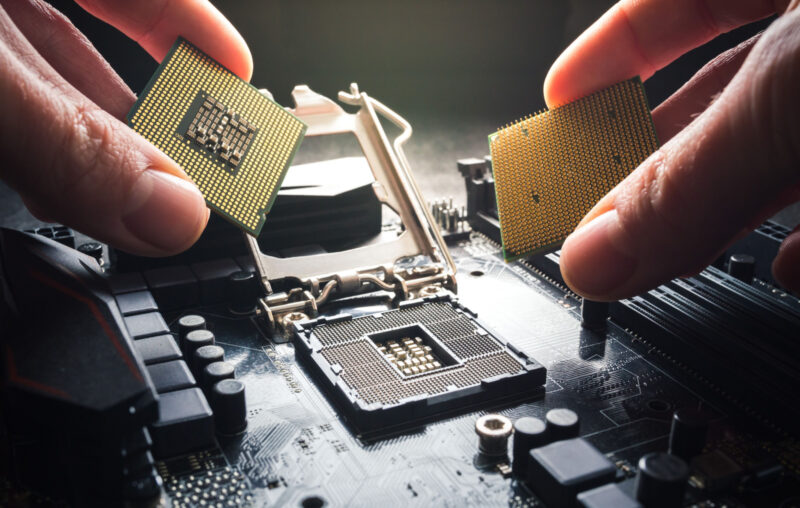Book Review: How the “Chip War” Vindicates Economics

Sometimes, economists get so stuck in their abstract theories that they lose sight of the real world, something they, as scientists, proclaim to investigate. Economists insisted, for example, that public goods like education cannot be sufficiently supplied privately, only to find that they can, are, and were. Or, textbooks say, common-pool resources get tragically depleted, even though they mostly aren’t. Or, sophisticated economic models show, “government must fund basic science because markets won’t,” even though they always have and still do. With hundreds of market “imperfections” filling textbook pages in defiance of evidence, it is almost tempting to dismiss economics as fiction rather than science.
Yet a careful investigation of the world may restore trust in (at least some) economic theories. An example of such an investigation is Chip War: The Fight for the World’s Most Critical Technology by Chris Miller. Unconcerned with abstract theory, Miller’s book exemplifies good, evidence-driven economic research. By educating the reader on the essential developments of the semiconductor industry, he inadvertently vindicates multiple economic thinkers and principles.
Industrial and technological progress, economist Deirdre McCloskey argued, was the result of the new freedom of trade, experiment, and profit pursuit. The Great Enrichment of the last 250 years was built by liberated entrepreneurs, not by elite scientific societies. So was the digital revolution. Turning the scientific invention of a transistor into a practical and life-improving innovation was no longer a matter of theoretical physics or writing academic papers. Instead, it took years of designing products, generating specialized manufacturing knowledge, tinkering with production processes, cutting costs, and building profitable companies. The transistor’s inventor William Shockley, Miller documents, was a brilliant, Nobel Prize-winning scientist, but a foul manager who failed his company. Eight engineers-turned-entrepreneurs, however, deserted Shockley to pursue riches, laid the foundations of Silicon Valley, and changed the world. Science was necessary, but only market entrepreneurship was sufficient.
Semiconductors were born, grew up, and succeeded in the United States because innovators worked to provide value in the free market. They failed in the Soviet Union, and today do not flourish in China because central planners have no such intentions or capabilities. As Ludwig von Mises and Friedrich von Hayek showed during the Socialist Calculation Debate, that central planners “are groping in the dark” because, without the guidance of prices and the discipline of profit and loss, they can’t tell whether they are producing or destroying value. Soviets, always 5 to 10 years behind technology-wise, even with complete understanding of science and numerous stolen specimens of US microchips, wasted huge sums on building Zelenograd, a failed caricature of Silicon Valley only to have it become completely irrelevant in global industry today. Recently, the Chinese spent even more on subsidies to companies like Huawei, which crumbled overnight when denied access to American technology, again proving Austrian economists right.
China and Russia will continue to fail because they dream of self-sufficiency in an industry of unfathomable complexity. Even if their spies could steal the information required to make the precision tools (some of which consist of 457,329 parts!) necessary to produce cutting-edge microchips, Miller says, “they’d lack the three decades of experience accumulated by the engineers who’ve developed” this technology. Adam Smith, the father of economics, taught the lessons of the division of labor and specialization, but socialists still refuse to learn them.
Semiconductor division of labor does not mean multitudes of small companies working on a tiny fraction of the whole supply chain. Instead, it means a few enormous, highly specialized, complex, and inimitable economies of scale like ASML (precision tools) and TSMC (chip fabrication). But turn off your Monopoly Alarms. Ronald Coase studied how, instead of relying on external suppliers, companies integrate certain operations under one umbrella to reduce transaction costs (costs associated with planning, changing plans, resolving disputes, negotiating) and increase long-term efficiency. ASML followed the Theory of The Firm to the letter by buying Cymer, the only supplier of deep-ultraviolet light sources required for cutting-edge microchip production, because “it decided it could manage them better.”
Monopoly alarms shouldn’t go off anyway, as concentration itself does not lead to inefficiency and monopolistic behavior. Real prices of ever-increasing computational power of ever-shrinking chips (and devices relying on them) continue to fall. As Harold Demsetz’s study of market concentration doctrine found, concentration in the market is more likely to be associated with efficiency and superior performance than monopoly power.
And there is nothing protecting incumbents from downfall. Intel, apparently, wasn’t ready for the advent of AI. Its microprocessor business was so profitable for so long, it overlooked the future. Since machine learning requires parallel processing, Nvidia rose to prominence, while Intel fell behind. Josef Schumpeter called this “creative destruction,” a process where a change in doing things completely and unexpectedly shatters the status quo. Edison’s lightbulb did that to Rockefeller’s kerosene lamps, and now parallel processing chips are doing it to general-purpose processors. Intel is making moves to catch up, but it only confirms there is no protection for market “monopolies,” except being at the top of the game.
Companies can try sustaining their competitiveness with cheap labor, which was a major factor in moving chip factories to Southeast Asia in the first place. But Miller highlights the win-win nature of semiconductor “sweatshops.” They do not exploit dire peasants, but instead provide alternatives to subsistence farming or unemployment. As Benjamin Powell argued, so-called “sweatshops” played a key role in bringing better wages, working conditions, and more prosperous lives to developing countries. Progress there was importantly facilitated by chip factories.
And the potential for progress is unlimited. We are not running out of resources. And we are not approaching the limits of physics where quantum effects will finally undermine Moore’s law, a prediction that the number of transistors in a circuit doubles about every two years. Despite repetitive warnings, engineers, scientists, designers, and entrepreneurs have ingeniously overcome every alleged barrier to increasing the number of transistors on a single microchip. This is because the only limit to progress is the ambition of what Julian Simon called The Ultimate Resource: the human mind. As long as dreamers are free to pursue the next breakthrough, there is no reason Moore’s law cannot live another day.
Economic theory can be enlightening when it meets reality. Let’s dismiss economic fiction, but let’s not forget to give credit where credit is due.










